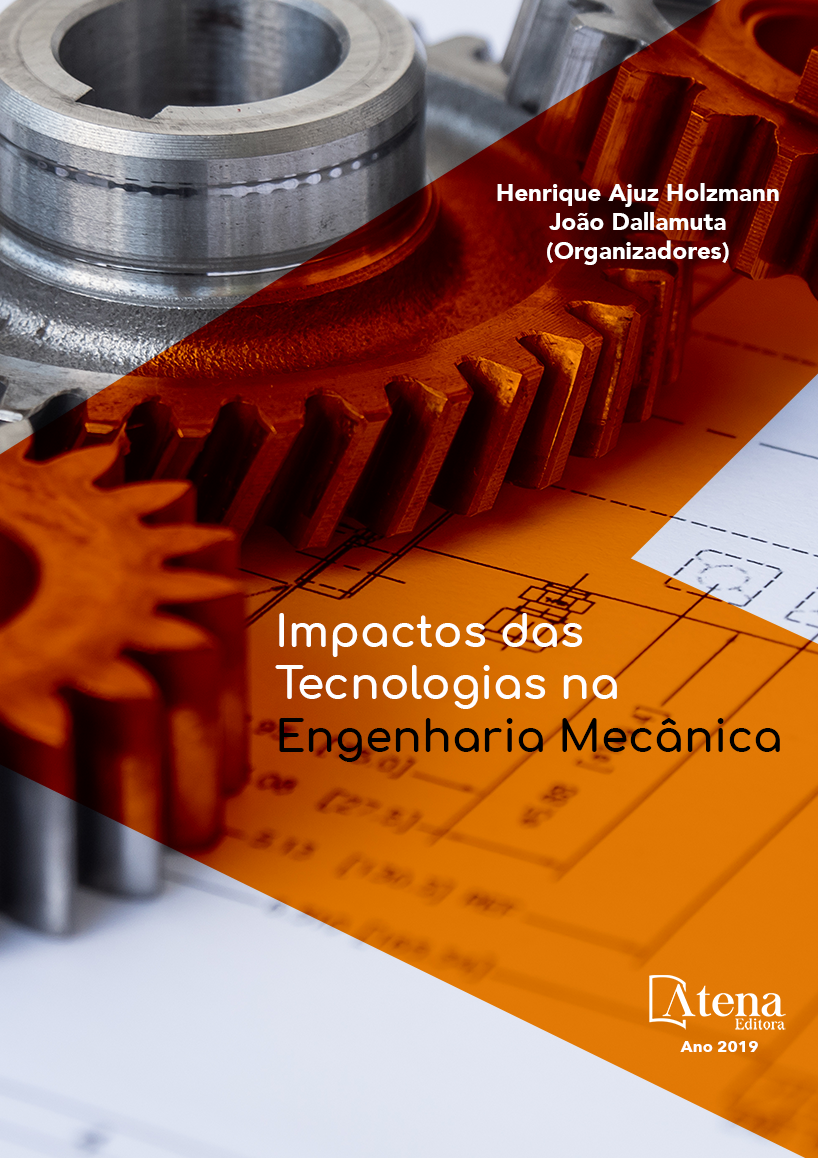
TEMPO DE MISTURA EM TANQUES COM IMPULSORES MECÂNICOS EQUIPADOS COM CHICANA PADRÃO E MODIFICADA
A potência consumida e o tempo de
mistura são os principais parâmetros de projeto
em tanques com impulsores mecânicos, os quais
podem ser usados como reatores químicos. A
literatura não possui muitas informações sobre
o tempo de mistura com chicanas padrões e,
praticamente, sem informações em condições
não padronizadas. O estudo teve por objetivo
avaliar experimentalmente o tempo de mistura
na agitação de água em tanque com impulsores
mecânicos equipado com uma chicana
padrão e uma chicana modificada. A unidade
experimental possuía um tanque com volume
10 litros, 1 motor elétrico com potência de 1
HP, impulsor axial com 4 pás inclinadas a 45°,
impulsor radial tipo turbina Rushton, 1 chicana
padrão Rushton e 1 chicana modificada com
orifícios. O tempo de mistura foi determinado
experimentalmente, em função do tipo de
impulsor e do tipo de chicana, através do
equilíbrio térmico após adição de água quente.
Com os resultados obtidos geraram-se funções
de potência para predição do tempo de mistura
com Reynolds entre 10000 e 100000. Concluiuse
que a melhor condição para um tanque
industrial com condições similares a do estudo
ocorre com o uso da chicana modificada e do
impulsor radial, fornecendo os menores tempos
de mistura.
TEMPO DE MISTURA EM TANQUES COM IMPULSORES MECÂNICOS EQUIPADOS COM CHICANA PADRÃO E MODIFICADA
-
DOI: 10.22533/at.ed.46319050413
-
Palavras-chave: Tanque com agitação; Tempo de mistura; Chicana modificada;
-
Keywords: Agitation tanks; Mixing time; Modified Baffle;
-
Abstract:
The power consumption and the
mixing time are the main design parameters in
tanks with mechanical impellers, which can be
used as chemical reactors. The literature does
not have much information on the time of mixing
with standard baffles and, practically, without
information in nonstandard conditions. The aim
of the study was to evaluate the mixing time in
the tank water shaking with mechanical impellers equipped with a standard baffle and
a modified baffle. The experimental unit had a tank with a 10-liter volume, an electric
motor with a power of 1 HP, axial impeller with 4 inclined blades at 45 °, Rushton turbine
type radial impeller, a Rushton standard baffle and a modified chicanery with holes.
The mixing time was determined experimentally, according to the type of impeller and
the type of baffle, through the thermal equilibrium after addition of hot water. With the
results obtained power functions were generated to predict the time of mixing with
Reynolds between 10000 and 100000. It was concluded that the best condition for an
industrial tank with similar conditions to the study occurs with the use of modified baffle
and impeller radial, providing the shortest mixing times.
-
Número de páginas: 15
- Breno Dantas Santos
- Juliana Sanches da Silva
- Marcos Bruno Santana
- Deovaldo de Moraes Júnior
- Vitor da Silva Rosa
- Murilo Antunes Alves Lucindo


